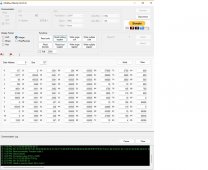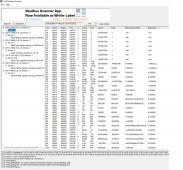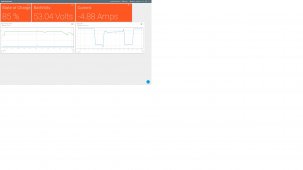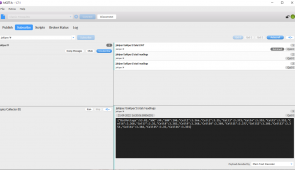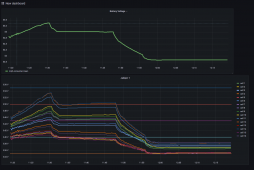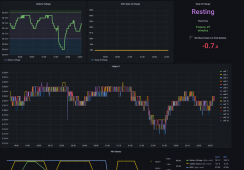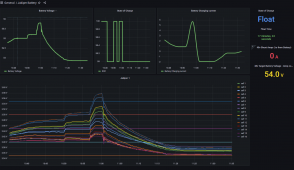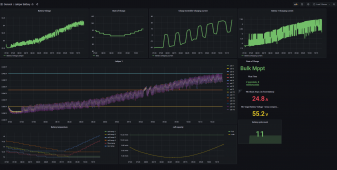I have been trying to monitor Jakiper server rack battery model JK48V100 via RS-485. The RS-485A port is programmable using Jakiper software. You can set it up to work with certain inverters using the Pbms Tools software that Jakiper provides . You need to connect to the RS-232 jack to use the Pbms Tools software. It is actually good software and provides most of the bms information anyone would want. It shows all the individucal cell voltages in a battery, if the cells are balancing, battery SOC, SOH, battery voltage, current going into or out of the battery, temperatures, and more. If you have the batteries stacked and interconnected using the RS-485B and C jacks then you can use the bms software to switch to each server rack battery for it's information.
The reason I want to get the RS-485 data is because I want to be able to monitor and log the data to a raspberry pi running grafana . I do this now using and esp8266 to rs-485 modbus of Peacefair PZEM-016 and PZEM-014 that monitor my Outback inverter output. I also monitor Midnite Classic controllers via tcp modbus and it also gets to the pi to graph using Grafana.
I want to be clear - I don't want to change any settings on the Jakiper bms - only monitor it. I was using some Windows Modbus tools to find available data from the RS-485A port. My connection is plugged in to the battery rs-485a jack and then using the correct wires to a RS-485 to USB adapter. The funny thing is that I couldn't get any valid data from the battery rs-485a jack trying the various inverter options using Pbms software - until I programmed it for Growatt Can . Suddenly the data showed up on the RS-485A jack . This makes me wonder if the trouble others have been having getting their inverters to work with Jakiper battery is because the label on the Pbms software for inverter setup is wrong ? Not sure - i don't have a Growatt inverter. I only know that I got the following results which I will attach pictures of .
My next step is to try and adapt some other modbus to esp8266 projects to work with this battery and be able to send the battery data out on wifi as mqtt. I am a novice at trying to accomplish anything like this and get a bit lost in the code. I thought I would share what I have found so far in case anyone else is interested or would like to help with this project. I mentioned the SOK batteries because they use the same type Pace bms in them. But I have no idea if it would work on them or not.
See photos below for what I have accomplished so far. If you look at lines 16 to 31 you can see that it is reporting the individual cell voltages. Thanks for any info or help .
The reason I want to get the RS-485 data is because I want to be able to monitor and log the data to a raspberry pi running grafana . I do this now using and esp8266 to rs-485 modbus of Peacefair PZEM-016 and PZEM-014 that monitor my Outback inverter output. I also monitor Midnite Classic controllers via tcp modbus and it also gets to the pi to graph using Grafana.
I want to be clear - I don't want to change any settings on the Jakiper bms - only monitor it. I was using some Windows Modbus tools to find available data from the RS-485A port. My connection is plugged in to the battery rs-485a jack and then using the correct wires to a RS-485 to USB adapter. The funny thing is that I couldn't get any valid data from the battery rs-485a jack trying the various inverter options using Pbms software - until I programmed it for Growatt Can . Suddenly the data showed up on the RS-485A jack . This makes me wonder if the trouble others have been having getting their inverters to work with Jakiper battery is because the label on the Pbms software for inverter setup is wrong ? Not sure - i don't have a Growatt inverter. I only know that I got the following results which I will attach pictures of .
My next step is to try and adapt some other modbus to esp8266 projects to work with this battery and be able to send the battery data out on wifi as mqtt. I am a novice at trying to accomplish anything like this and get a bit lost in the code. I thought I would share what I have found so far in case anyone else is interested or would like to help with this project. I mentioned the SOK batteries because they use the same type Pace bms in them. But I have no idea if it would work on them or not.
See photos below for what I have accomplished so far. If you look at lines 16 to 31 you can see that it is reporting the individual cell voltages. Thanks for any info or help .



